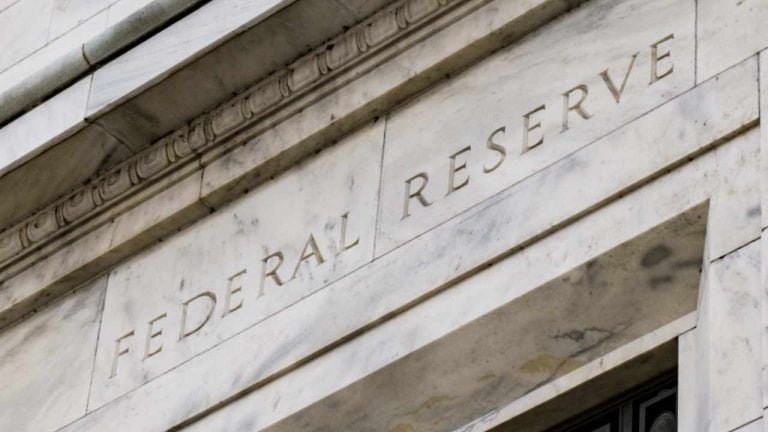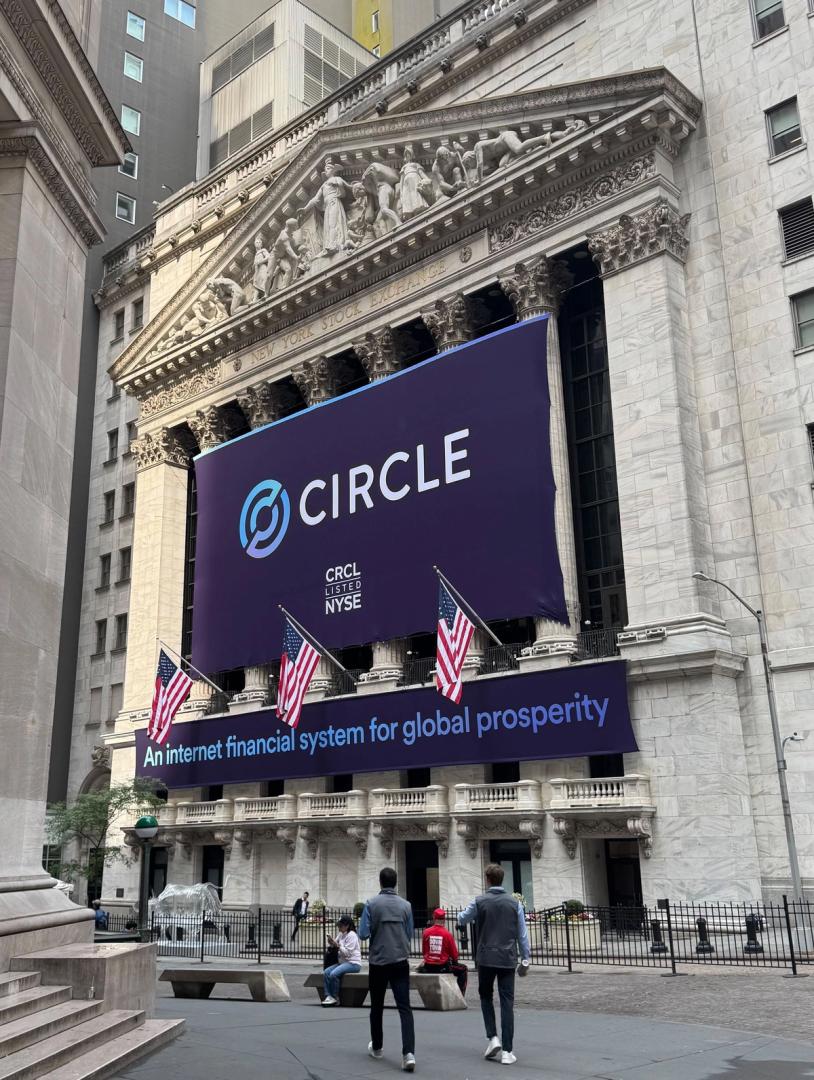[ad_1]
 The Federal Reserve is accelerating efforts to eliminate regulatory gray zones, pledging precise digital asset guidance to unlock innovation in crypto and next-gen financial technologies. Fed Targets Ambiguity in Digital Asset Rules as Part of Broader Overhaul Federal Reserve Vice Chair for Supervision Michelle W. Bowman emphasized on June 6 at Georgetown University’s Psaros Center […]
The Federal Reserve is accelerating efforts to eliminate regulatory gray zones, pledging precise digital asset guidance to unlock innovation in crypto and next-gen financial technologies. Fed Targets Ambiguity in Digital Asset Rules as Part of Broader Overhaul Federal Reserve Vice Chair for Supervision Michelle W. Bowman emphasized on June 6 at Georgetown University’s Psaros Center […]
[ad_2]
Source link
Fed Signals End to Ambiguous Crypto Rules, Clearing Road for Innovation
Hashed Research CEO Appointed Chief Policy Officer at Presidential Office
[ad_1]

Korea’s new President, Lee Jae-myung, has appointed the CEO of Hashed Research, Kim Yong-beom, to be the Chief Policy Officer of Korea’s Presidential Office.
A very sad day at @hashed_official. The new president just stole the CEO of our proud think tank, Hashed Open Research.
He’s now Chief Presidential Secretary for Policy —
a minister-level position, and arguably the most crypto-native and Web3-friendly official in Korean… pic.twitter.com/VS2ouCjgRa— Simon Kim (@simonkim_nft) June 6, 2025
Before leading Hashed Research, crypto fund Hashed’s think tank, Kim was the Vice Minister of Economy and Finance during the Moon Jae-in administration.
In a previous interview with CoinDesk, Simon Kim, the CEO of Hashed, stated that the Lee administration will be crypto-friendly and that local regulators are closely monitoring crypto policy developments in the U.S with an aim to emulate them.
One of the first policy initiatives Kim Yong-beom might be working on is a Won-based stablecoin, which was identified by newly elected President Lee as a priority to “prevent national wealth from leaking overseas.”
[ad_2]
Source link
XRP price forecast as Ripple USD (RLUSD) volume drops
[ad_1]

- XRP has rebounded to $2.18, overcoming an hourly death cross signal.
- The RLUSD volume has dropped over 60% amid halted minting.
- XRP is likely to trade between $2.15 and $2.25 in the short term.
The price of XRP has shown notable resilience even as broader market sentiment remains cautious.
As of press time, XRP trades at $2.18, reflecting a slight 0.2% increase over the past 24 hours.
The cryptocurrency rebounded sharply after falling to $2.06 on Thursday, recovering most of the intraday losses and closing the trading session with signs of renewed bullish pressure.
Ripple USD (RLUSD) sees a steep volume decline
While XRP has been showing signs of strength, Ripple’s stablecoin, Ripple USD (RLUSD), has suffered a sharp drop in market activity.
The trading volume for RLUSD has declined by more than 60%, plunging to around $42 million according to CoinMarketCap data.
According to market observers, the decline has been attributed to a pause in minting, as Ripple has not issued any new RLUSD tokens in over 41 days. This prolonged halt suggests either a strategic move to limit supply or waning demand for the asset.
The drop in volume has led to speculation about its potential impact on the XRP Ledger ecosystem.
Some analysts argue that lower RLUSD activity could reduce liquidity across decentralised exchanges and decentralised applications built on the XRPL.
Although RLUSD was introduced as a competitor to dominant stablecoins like USDT and USDC, the recent decline hints that user adoption may be stalling.
However, XRP has remained relatively insulated from this downturn, largely due to its broader utility in cross-border payments and remittances.
Despite the interconnectedness of the two assets within Ripple’s ecosystem, XRP’s price dynamics appear to be decoupling from those of RLUSD.
This separation reinforces the view that XRP’s valuation is being driven more by investor sentiment and trading activity than by RLUSD’s performance.
XRP price prediction
Over the last seven days, XRP has hovered within a tight range of $2.09 to $2.28, suggesting a consolidation phase.
Notably, it has registered a 313.9% gain year-on-year, a strong signal of underlying investor confidence.
Despite a “death cross” formation (the SMA 50 went below the SMA 200) on the hourly chart—a technical pattern typically interpreted as bearish—XRP defied expectations and staged a reversal.
XRP bulls, undeterred, successfully defended key support levels and ignited a recovery that coincided with an over 70% surge in trading volume, which reached $3.5 billion within 24 hours.

The strong volume support underscores that buyer interest remains active, even amid mixed technical signals.
Looking ahead, XRP’s price outlook presents a balanced mix of caution and optimism.
On the hourly chart, the asset is attempting to break past short-term resistance at $2.19, which aligns with the 200-hour simple moving average.
A successful breakout above this level could pave the way for another test of the $2.28 zone, which marked a recent high.
Failure to close above $2.19, however, may trigger a pullback toward $2.15, a range where XRP has shown stability over the past few sessions.
On the daily chart, XRP recently bounced off the $2.0777 support level, suggesting that bullish sentiment is not entirely exhausted.
Although momentum has slowed, the asset remains within a consolidation channel between $2.15 and $2.25.
Unless sellers gain control, this range-bound behaviour is expected to continue in the short term.
A strong weekly close above $2.25 could revive hopes for a push toward the $2.40 level, which would represent a fresh local high.

In the short term, as long as key support levels hold and volume remains elevated, XRP may continue to trade with a slight bullish bias in the coming days.
[ad_2]
Source link
Circle Scores Big on IPO Fever
[ad_1]

It was a week of fortunes made, and fortunes lost, at CoinDesk.
On the one hand, we had Circle, long a leading crypto company, hurtling to IPO and making bank. Its shares were priced at $110 at press time (up from $31 Wednesday), leading many to expect a summer and fall of crypto-themed IPOs.
On the other, we saw HyperLiquid trader James Wynn go from having a $100 million BTC position one day to a massive loss the next. (Kids, beware the big, bad leverage monster).
Most of the market portents looked good, though. Crypto money-raising season was in full swing.
Groups doubled-down on the Bitcoin Treasury Strategy, not least Metaplanet, Japan’s answer to Michael Saylor’s Strategy. Pump.Fun, Solana’s memecoin juggernaut, said it was lining up $1 billion at a $4 billion valuation. One of its children, Fartcoin, surged on rumors of a Coinbase listing.
Crypto technology continued to get integrated into mainstream products. Prediction markets from Polymarket are coming to X and xAI. Uber, Apple, Airbnb and others said they were hoping to combine stablecoins into their payment offerings. Revolut said it would soon offer derivatives. And so on.
Still, Trump and Musk dominated coverage as normal (probably to an unhealthy degree). On Thursday, Trump’s media company Truth Social said it would launch its own Bitcoin ETF. (By Friday, it was set to issue more shares as well.)
The Trump-Musk feud, which also broke this week, highlighted the U.S.’s precarious debt situation (a key driver for bitcoin’s existence). But so far bitcoin, and dogecoin, prices are down on the news. Really anything is possible in the weeks ahead.
[ad_2]
Source link
Solana (SOL) Introduces Alpenglow for Faster Blockchain Consensus
[ad_1]
Tony Kim
Jun 06, 2025 16:44
Solana’s Alpenglow aims to revolutionize blockchain consensus with 100x faster finality, replacing Proof of History with Votor and Rotor systems.
Solana has unveiled its latest consensus upgrade, Alpenglow, which promises to enhance blockchain finality by a factor of 100. Developed by Anza’s research team, led by ETH Zurich’s Professor Roger Wattenhofer, Alpenglow replaces Solana’s existing Proof of History and Tower BFT systems with new components named Votor and Rotor. According to Sei, this transition aims to achieve deterministic finality in just 100-150 milliseconds under optimal conditions, compared to the current 12.8 seconds.
Technical Innovations in Alpenglow
The core of Alpenglow’s design is its dual-path consensus system, Votor, which allows blocks to reach finality through either a fast path or a slow path, depending on stake approval percentages. This system is complemented by Rotor, which implements a single-hop relay system to reduce network latency and optimize resource utilization.
Alpenglow introduces a novel Byzantine fault tolerance model, termed “20+20”, which can handle up to 20% adversarial stake and an additional 20% of offline validators. This model exceeds traditional systems, which typically manage up to 33% adversarial nodes, providing a more robust consensus mechanism.
Simplification and Performance Improvements
The upgrade reduces the complexity associated with Solana’s former protocols. By eliminating the Proof of History, Alpenglow simplifies consensus mechanics, offering fixed block timing and reducing cryptographic overhead. This change not only speeds up the process but also enhances network stability and security.
Additionally, Alpenglow’s BLS signature aggregation allows for lightweight vote messages and aggregated certificates, significantly lowering validator costs and operational complexity. This reduction in complexity is expected to foster increased decentralization by reducing the financial barriers for validators.
Challenges and Future Considerations
Despite its advancements, Alpenglow faces challenges such as dependency on a single client, Agave, and potential centralization pressures due to geographical performance variations. Moreover, some economic mechanisms, such as reward distribution and penalty enforcement, remain unspecified, potentially leading to ecosystem contention.
Concerns also arise around restructuring the Maximal Extractable Value (MEV) landscape, as the new system may disadvantage independent arbitrageurs while benefiting validators with advanced infrastructure. RPC providers might face scalability challenges due to the new consensus model’s requirements for real-time data freshness.
Solana’s Alpenglow upgrade represents a significant leap towards achieving sub-second finality and reducing validator expenses. However, to ensure a successful transition, Solana must address remaining challenges, including validator economics and scalability concerns, through ongoing research and community collaboration. The success of Alpenglow will depend on balancing speed, security, and decentralization, alongside rigorous development and ecosystem coordination.
Image source: Shutterstock
[ad_2]
Source link
Bitcoin nears $105K as Donald Trump demands ‘full point’ Fed rate cut
[ad_1]
Key points:
Bitcoin (BTC) passed $104,000 at the June 6 Wall Street open as strong US labor market data contrasted with fresh calls for interest-rate cuts.
Bitcoin edges higher as Trump moves to Fed
Data from Cointelegraph Markets Pro and TradingView showed BTC/USD up 2.5% on the day.
Having recovered from snap losses over the ongoing spat between US President Donald Trump and SpaceX CEO Elon Musk, markets digested fresh inflation cues as Trump turned his attention to the Federal Reserve.
“‘Too Late’ at the Fed is a disaster!” he wrote in part of the day’s posts on Truth Social.
Trump is no stranger to criticism of both Fed policy and Chair Jerome Powell, and has frequently demanded interest-rate cuts in 2025 — something that would benefit risk assets and crypto.
“Europe has had 10 rate cuts, we have had none. Despite him, our Country is doing great,” he continued, referring to Powell.
“Go for a full point, Rocket Fuel!”
As Cointelegraph previously reported, markets see little chance of cuts coming before the Fed’s September meeting, per data from CME Group’s FedWatch Tool, with Trump’s full point’s worth fully priced out.
The day’s nonfarm payrolls data meanwhile appeared to support the Fed’s current approach, showing a resilient labor market and thus decreasing the need to lower rates.
An official release from the US Bureau of Labor Statistics (BLS) confirmed that “total nonfarm payroll employment increased by 139,000 in May, and the unemployment rate was unchanged at 4.2 percent.”
Analysis warns of Bitcoin “liquidity trap”
Turning to BTC price action, popular trader TheKingfisher returned to order book liquidity for clues as to market direction.
Related: Bitcoin Hash Ribbons metric just delivered its 3rd ‘buy’ signal of 2025
Earlier, Cointelegraph noted various downside price predictions for the short term, with commentators agreeing that BTC/USD could fall below $100,000.
“This $BTC liquidation map (optical_opti timeframe) reveals a massive cluster of long liquidations between ~99k and 102k,” part of an X post read on the day.
“That’s a huge magnetic zone below current price. In contrast, short liquidations above ~104.5k are minimal.”
TheKingfisher added that the resulting “strong imbalance” of bid versus ask liquidity increased the risk of a liquidity cascade downward.
“Normies see support; we see a liquidation trap,” the post summarized.
This article does not contain investment advice or recommendations. Every investment and trading move involves risk, and readers should conduct their own research when making a decision.
[ad_2] [ad_1] TRON (TRX) is gaining momentum as a sharp increase in on-chain activity meets the emergence of a classic bullish breakout, signalling a potentially significant price breakout. Despite recent market volatility, the blockchain has managed to hold above key support levels, even as technical signals point to both downside risk and upside opportunity in the days ahead. A sustained surge in daily transactions and active addresses has reinforced long-term bullish sentiment, suggesting that TRON may be preparing for a major move. This growing optimism comes at a time when TRX trades just below a key resistance zone, with technical traders eyeing the confirmation of the breakout. TRON’s price is currently hovering around $0.279 after gaining 2% over the last 24 hours, rebounding from a recent low of $0.2668 and staying well within its 7-day range of $0.2639 to $0.2822. This relatively tight range reflects ongoing market indecision, although the token has posted a monthly gain of 13%, pointing to a broader upward trend that appears to be gaining traction. Although TRX failed to sustain its momentum following a 2.57% intraday surge earlier this week, a strong bounce off critical support has kept bulls cautiously optimistic. Technical indicators on the daily chart highlight a hidden bearish divergence in the Relative Strength Index (RSI), but price action remains constructive, particularly above the 50-day EMA at $0.2629. The bullish structure is further reinforced by the alignment of the 50-, 100-, and 200-day EMAs, all of which are sloping upwards and providing dynamic support beneath current price levels. Looking at the daily chart, it is evident that the price of TRON is breaking from a bullish flag pattern, a setup that typically precedes strong continuation moves in trending markets. If the current daily candle closes above the bullish flag, we could have a confirmed bullish breakout, although it will remain to be seen how the subsequent candlesticks behave. At the moment, strong rejection has been observed around $0.278 and $0.280, and a confirmed breakout above this resistance zone could propel TRX to $0.30 and beyond. On-chain sentiment remains divided, with derivatives market data showing a decline in open interest to $264 million and a negative funding rate of -0.0005%, suggesting increased short positioning. However, the long-to-short ratio has also fallen to 0.8793, revealing that a growing number of traders expect a price decline, potentially setting the stage for a short squeeze if bullish momentum resumes. TRON’s fundamental outlook is increasingly bullish as the network hits a record high in active addresses, now exceeding 2.4 million and reflecting a consistent rise in user engagement. Recent data from CryptoQuant confirms that daily transactions on the TRON network have surged past 8 million, a 30% increase in just four months that indicates robust network utility and rising demand. Good Morning Friends! TRON is heating up 🔥 With over $20 billion in stablecoin transfers daily, TRON is outpacing even Visa. Daily transactions have surged past 8 million, climbing by 2 million since February. At this pace, on-chain volume could exceed $7 trillion in 2025.… pic.twitter.com/bfOjy8FE93 — Jaffer (@JafferKOL) June 6, 2025 More importantly, a large portion of this transaction volume is now occurring outside of centralised exchanges, emphasising real-world usage and organic growth within TRON’s DeFi and dApp ecosystems. This shift signals broader adoption of TRON’s services for peer-to-peer transfers, gaming, and decentralised finance (DeFi), especially in emerging markets where low fees and high throughput are crucial advantages. USDT transfers continue to dominate TRON’s activity, with over $611 billion in value moved across its blockchain, positioning it as the top network for stablecoin transactions globally. Given the platform’s growing appeal for developers and institutions alike, TRON is well-positioned to attract continued capital inflows and ecosystem growth, both of which could catalyse upward price movement. While price remains about 35% below its all-time high of $0.4313 from December 2024, analysts argue that sustained on-chain strength could push TRX to retest and potentially surpass this level in the coming months. Should the bullish flag pattern breakout be confirmed, then the altcoin could attempt to break past the resistance at $0.2806, with next targets at $0.41, $0.44, and even $0.50 as buying pressure accelerates on breakout confirmation. Nevertheless, traders should monitor key support at $0.264, as a failure to hold this level may expose TRX to a decline toward $0.25, invalidating the bullish setup in the process. However, as institutional interest grows and TRON continues to lead in active usage, the coming weeks could prove decisive in determining whether TRX begins its next major leg up. [ad_1] Bitcoin is showing signs of strain as technical indicators point to a possible short-term correction, despite the cryptocurrency maintaining levels above $103,000. The market’s attention has turned to a narrowing support zone that analysts warn could trigger a steep decline if breached. As of Thursday afternoon, Bitcoin is trading at $104,082, down about 1% over the past 24 hours. Market watchers say price action around the $98,000 to $101,000 band will likely determine whether Bitcoin maintains its bullish momentum or heads for a notable pullback. Crypto analyst DonAlt has highlighted the $98,000 to $101,000 level as Bitcoin’s most important short-term support, noting that any breakdown below this area could result in a sharp 15% price drop. A breach would place Bitcoin near $90,000, a level last seen in early May. The analysis is based on a daily chart that appears unstable following what the analyst describes as a “false breakout” earlier this month. Bitcoin surged to a new all-time high around $112,000 before retreating to the support zone. According to DonAlt, such behaviour is often associated with market weakness. In strong uptrends, price action usually builds on previous highs, rather than retracing to earlier consolidation levels. The recent return to the support range could indicate a lack of follow-through from bulls and increased risk of selling pressure. Another widely followed metric is also pointing to a potential weakness. Crypto market analyst Ali Martinez noted that Bitcoin’s Market Value to Realised Value (MVRV) ratio has fallen below its 200-day moving average. Historically, such movements have preceded periods of correction or sideways price action. The MVRV ratio compares the market capitalisation of Bitcoin to the average purchase price of coins currently in circulation. A declining ratio suggests that investors, on average, are holding unrealised profits or losses that may affect their willingness to sell. A drop below the long-term average typically reflects weakening conviction in current price levels and has often led to short-term downward moves. While short-term indicators may suggest increased downside risk, longer timeframes continue to offer some reassurance. According to DonAlt, both the weekly and monthly Bitcoin charts remain strong and consistent with a broader bullish structure. He stated that the daily chart looks fragile at the moment, but longer-term trends are still supportive of higher prices ahead. Bitcoin’s market dominance has also continued to grow, now standing at 64.61%. This suggests that despite current volatility, investor confidence in Bitcoin over other cryptocurrencies remains relatively high. At present, traders are closely watching whether Bitcoin can remain above the $101,000 level, with sentiment divided between bulls who view the dip as a temporary pause and bears who expect a deeper correction. The convergence of chart patterns and weakening metrics like the MVRV ratio has introduced an element of uncertainty, especially after Bitcoin’s rapid ascent to record highs. With Bitcoin holding above the psychological $100,000 mark for now, traders may remain on edge until a clear direction emerges. If the lower support levels fail, the next leg could be a quick drop to $90,000, a move that would reset much of May’s gains. However, if support holds, the recent weakness may simply represent a consolidation phase before another leg upward. [ad_2] [ad_1] The crypto market is currently navigating a wave of uncertainty triggered by the escalating feud between US President Donald Trump and billionaire Elon Musk. As the tension between these two influential figures intensifies, investors are closely watching how their clash impacts cryptocurrency sentiment and capital flows. This discord has already sent ripples through Bitcoin ETFs, sparking outflows and shifting investor behaviour, while other crypto assets like Bitcoin Pepe, which is currently in the final stages of its token presale, are showing surprising resilience. The fallout from the Trump-Musk feud has significantly influenced market sentiment, pushing the Cryptocurrency Fear & Greed Index from “Greed” to “Neutral.” As a result, the global cryptocurrency market cap has dropped by 4% to around $3.35 trillion, as per Coingecko data. Notably, major coins including Bitcoin (BTC), Ethereum (ETH), XRP, Binance Coin (BNB), Solana (SOL), and Cardano (ADA), among others, have registered significant drops. Amid the worsening investor confidence, Bitcoin ETFs in the United States experienced a sharp reversal, with outflows reaching $278 million on June 5, according to Coinglass data. Meanwhile, Ethereum ETFs have bucked this trend, continuing a 14-day streak of inflows despite the overall market jitters. The feud itself has drawn widespread political and business attention, fracturing previously supportive alliances and raising questions about future government contracts and national programs linked to Musk’s SpaceX. Musk’s claims of credit for Trump’s 2024 election victory, coupled with serious accusations and policy threats exchanged between the two, have intensified market nervousness. This high-profile clash has spilled over into public discourse, stirring economic fears and influencing investor decisions across multiple asset classes, including cryptocurrencies. Consequently, Bitcoin ETFs have borne the brunt of the sentiment shift, while Ethereum’s improving network fundamentals and strong institutional support have sustained investor interest. Despite this turbulent backdrop, Bitcoin Pepe has emerged as the standout crypto investment amid market volatility and uncertainty. Bitcoin Pepe is a revolutionary meme-centric Layer 2 project built on the Bitcoin blockchain, combining Solana-style scalability with Bitcoin’s unparalleled security. Currently, Bitcoin Pepe is in its final presale stage, with just 11 days remaining before the much-anticipated listing announcement expected on June 17.. What sets Bitcoin Pepe apart is its unique PEP-20 token standard. The project also boasts a high-growth roadmap with staking rewards and strategic partnerships. In a market shaken by political drama and ETF outflows, Bitcoin Pepe’s blend of cutting-edge technology and strong community appeal makes it a haven for forward-looking investors. As established cryptocurrencies struggle to maintain a bullish trend amid the Trump-Musk fallout, Bitcoin Pepe is among the fastest-growing cryptocurrencies, offering fresh excitement and genuine potential for exponential gains. Investors seeking a crypto that merges security, usability, and meme culture should consider Bitcoin Pepe’s presale opportunity before it closes. With the listing announcement just days away, buying now positions investors to capitalise on early adoption advantages and long-term growth prospects. To learn more and to buy Bitcoin Pepe, check out the official website. [ad_2] [ad_1]
Source link
active addresses surge amid a bullish breakout

TRX price analysis

TRON price forecast
[ad_2]
Source link
Bitcoin at $104K, but falling MVRV ratio hints at short-term correction


Key support range under pressure as analyst warns of reversal
MVRV ratio falls below key threshold, raising concerns
Long-term charts remain intact, despite bearish short-term signals
Market sentiment is cautious as technical divergence grows
Source link
Best crypto to buy now as the crypto market reacts to the Trump-Musk feud

Impact of the Trump-Musk feud on the crypto market
The best crypto to buy as the broader market drops
Source link
Best Crypto Wallets in 2025 (So Far): Custodial and Non-Custodial Options Compared
 Looking for the best crypto wallets in 2025? We compare top non-custodial and custodial wallets based on security, usability, privacy, and features. See why the Bitcoin.com Wallet leads the pack. Why Wallet Choice Matters More Than Ever The collapse of centralized crypto giants like FTX, Celsius, and BlockFi during the 2021–2022 cycle underscored a simple […]
Looking for the best crypto wallets in 2025? We compare top non-custodial and custodial wallets based on security, usability, privacy, and features. See why the Bitcoin.com Wallet leads the pack. Why Wallet Choice Matters More Than Ever The collapse of centralized crypto giants like FTX, Celsius, and BlockFi during the 2021–2022 cycle underscored a simple […]
[ad_2]
Source link











